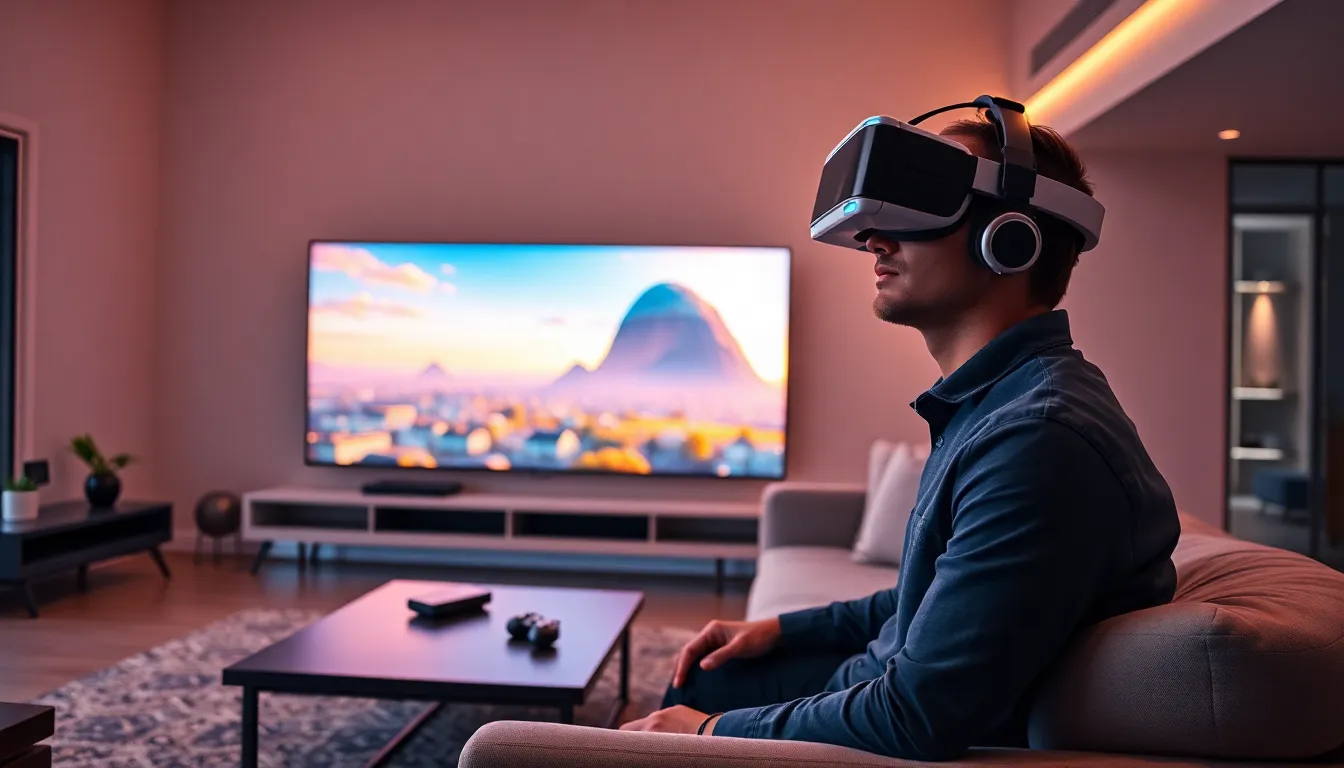Table of Contents
ToggleIn a world where we can strap on a headset and become anything from a heroic knight to a space-faring explorer in mere moments, it’s easy to get lost in the allure of virtual reality. Who wouldn’t want to escape to a place where the only limit is their imagination? But, before one dives headfirst into this digital wonderland, it’s essential to recognize that while VR can be thrilling, too much immersion can lead to a disconnect from the real world. So, how does one navigate the brave new world of virtual adventures without losing sight of reality? Let’s explore this intriguing balance, while keeping it light and insightful. After all, no one wants to end up being the person whose only friends are digital avatars.
Understanding Virtual Reality and Its Allure

Virtual reality (VR) is an exciting blend of technology and artistry, enticing users into its immersive environments. It transforms gaming and entertainment while pushing the boundaries of interaction. Imagine donning a headset and realizing you’re no longer on your couch. Instead, you’re on Mars battling alien invaders or exploring the depths of the ocean with colorful marine life swimming by. That’s the magic of VR, and that magic is what draws countless individuals into repeatedly escaping their reality.
The appeal lies in its ability to create experiences that are visceral and unforgettable. The sights, sounds, and even sensations of a virtual world can feel incredibly real, allowing users to temporarily shed their day-to-day worries. This level of immersion is not merely a nice-to-have: it serves as a powerful escape from our sometimes drab daily lives. But, it’s vital to approach these digital escapades with caution.
The Psychological Effects of Immersion in VR
Delving into the depths of VR often feels exhilarating, yet it can also trigger unintended psychological effects. Users may lose track of time, forget real-world responsibilities, or experience intense emotional bonds with characters they interact with. This level of engagement blurs the lines between reality and simulation, causing some to confuse their escapism with genuine experience.
Identifying the Signs of VR Overuse
Recognizing the signs of VR overuse is crucial for maintaining a healthy relationship with this technology. If someone starts finding it difficult to enjoy real-world activities, experiences mood swings, or notices diminished social interactions, those may be red flags. The immersive nature of VR can be so captivating that it leads individuals to retreat into their virtual worlds, forgetting about their obligations and relationships in the physical world. It’s imperative to strike a balance before this blissful escape turns into an isolating ordeal.
The Importance of Real-World Connections
In the grand tapestry of human life, genuine connections with other people form the strongest threads. While VR can help social interaction through avatars and digital spaces, it cannot replace the depth and richness of real-world relationships. Engaging with friends and family face-to-face fosters empathy, emotional support, and meaningful communication that a virtual chat simply cannot replicate.
When someone spends excessive time in virtual environments, they may miss out on life’s simple pleasures, like a warm hug or the sound of laughter. It’s essential to remember that while it’s great to save the world in a game, the true heroics often happen in the everyday interactions we have with those we care about. Reconnecting with real-world relationships may provide that much-needed perspective on life.
Strategies for Managing VR Usage
To manage VR usage effectively, a few strategies can go a long way in helping individuals find a healthy balance. For starters, setting certain boundaries about how much time is spent in VR can help keep things in check. Allocating specific times for VR gaming or exploration can create a sense of structure.
Setting Boundaries and Creating Healthy Habits
Creating healthy habits starts with awareness. One handy rule is to follow the age-old coffee limit: take breaks every hour. This not only provides users with a chance to stretch but also allows them time to reflect on their experiences and re-engage with the physical world. These simple adjustments can enhance the enjoyment of VR while ensuring it doesn’t consume every waking hour.
Engaging in Offline Activities
Also, engaging in offline activities can serve as a gentle reminder that the real world is still vibrant and full of opportunities. Activities like outdoor sports, hobbies such as painting or gardening, or even a friendly board game can be invigorating alternatives. These off-screen interactions allow for creative expression and social bonding that enrich the soul.
Mindfulness and Reflection Practices
Incorporating mindfulness and reflection into one’s routine is another powerful strategy for balancing virtual and real-world experiences. Mindfulness encourages individuals to be present by focusing on the here and now, so fostering a sense of gratitude and appreciation for daily life.
Practices such as meditation, journaling, or simply taking quiet moments to reflect can ground a person, making them aware of their feelings concerning their VR experiences. This intentional awareness allows for a more conscious interaction with technology, encouraging users to ask themselves: “How is this impacting my life?” Such reflection serves to deepen understanding of one’s motives for using VR, leading to a more enriching experience.





